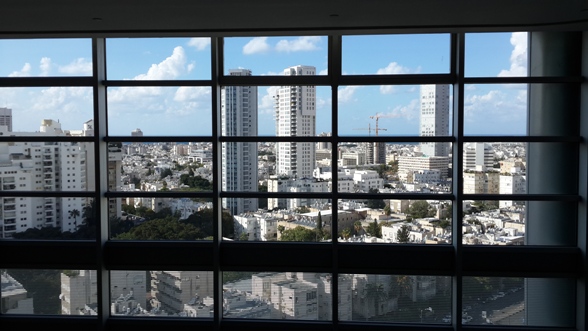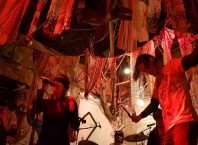
I’ve been seeing things differently for the past week or so. It began on a Friday afternoon, in the middle of a family conversation around the table at my mother’s house. I suddenly saw a spark of yellow light in the corner of one eye, the left eye, somehow it’s always the left that makes trouble. The yellow light burst into a colorful squiggle, then I saw a large black spot and wild expressionistic lines dancing before my eyes as the words “detached retina” murmured ominously in my mind.
I called my healthcare provider’s 24 hour number, where I was told that my situation is not urgent, and I should wait the six hours until their clinic opens. Forget that. At the private clinic, the doctor saw me immediately and sent me straight to the ER at the hospital. He too was thinking “detached retina.”
At the hospital the surgeon quickly determined that the retina had not detached, and sent me to the Eye Department. This, my friends, taught me the true purpose of hospital design: survival of the smartest. Despite following her directions precisely, I found myself walking back and forth along the corridor looking for the elevators that would take me to the right floor. Remember, I was there with impaired vision, so I had to rely on my wits. Finally, I found the narrow alleyway that led to the hidden elevator, used my magic harp to put the dragon to sleep and then reached the Eye Department, where ironically, there is an excellent view of the city.

The good news is that my retina does not seem to be torn. The bad news is that I did experience posterior vitreous detachment, which means that my risk for a torn or detached retina is now significantly higher. Scary, and there’s still the matter of the black spot. So, geeky person that I am, I’ve been doing a lot of reading on the subject. I’ve learned that those black abstract shapes, while much more muted than at their initial dramatic appearance, are here to stay.
Most sources I’ve read reassure me that I will learn to gradually ignore them, but for now, they are a black spot on my horizon. I am literally seeing things differently.
I can’t imagine ever becoming accustomed to seeing black spots and wavering lines floating before me. Yet when I think about it, there are so many things I never ‘see,’ simply because I see them every day. It’s easy to walk down the streets of Tel Aviv and see only the shops and cafes. Easy to maneuver past people without seeing any faces, easy to walk without ever looking up at the apartments where people live, or down at the tangled roots of the thick, old trees. It’s even easier to ignore all those things that one prefers not to see.
Maybe in a few weeks, the experience will fade and become a memory. I will no longer see those spots, although they will still be there. When I wake up in the morning, when I walk down the street, as I write these words: I see the black spot. It sends a shiver of fear down my spine, but it also makes everything around it more vivid, more visible to me somehow. I am conscious of seeing every waking moment of the day.
People often ask me why I decided to write about culture, and one of the reasons I founded Midnight East is because that’s how I feel when I hear a song that moves me, or see a movie, play or dance performance that I think is really good: it makes me see everything differently. It’s not just about having a good time in the theatre or concert hall or gallery; it’s the way a work of art can change the way I see and think about things when I walk out of the theatre, when I walk down the street and look at the people’s faces and think about their lives, when I look up at the trees in wonder.





